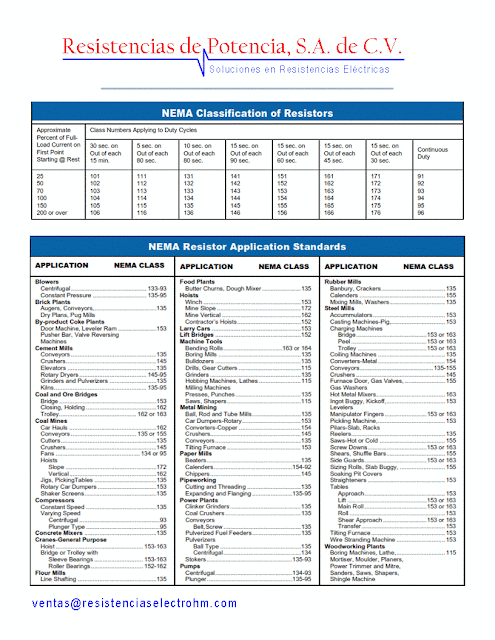Neutral Grounding Resistors
Neutral Grounding Resistors are used in industrial power systems for resistance grounding of wyeconnected generators and transformers. A neutral grounding resistor limits the fault current to a value which is sufficient enough to operate protective relays, yet prevent unwanted fault damage.
Neutral grounding resistors are rated in line-to-neutral voltage (system voltage divided by 1.732), initial fault current and maximum time
Neutral grounding resistors are designed to dissipate the required amount of energy and not exceed the temperature limitations of IEEE Standard 32-1972. As defined in this publication, the time and temperature ratings for neutral grounding resistors are as follows:
Short time:
Short time ratings are 10 and 60 seconds. Since short time rated resistors can only withstand rated current for short periods of time, they are usually used with fault clearing relays. The short time temperature rise for the resistive element is 760°C.
Extended time:
A time on rating greater than ten minutes which permits temperature rise of resistive elements to become constant, but limited to an average not more than 90 days per year. The extended temperature rise for the resistive element is 610°C.
Continuous:
Capable of withstanding rated current for an indefinite period of time. The continuous temperature rise for the resistive element is 385°C.
Resistor Assembly:
The resistor coils consist of a stainless steel edgewound element wound around a ceramic core supported on a through-rod. Glazed insulators are attached to each end of the coils and fastened to a heavy gage, corrosion resistant frame. The unit is designed to permit the expansion of supporting rods when submitted to high operating temperatures. Resistor elements are joined by stainless steel connectors, which are welded in place, to form a positive electrical path.
Enclosure:
Our resistor assemblies are available with grounded safety enclosures to protect personnel and wildlife from harm. Screened and louvered enclosures are available in a variety of finishes including painted, powder coated, galvanized, hot-dipped galvanized, aluminum and stainless steel. Options: A number of additional options are available including entrance bushings, current transformers and elevating stands.
Follw us in Twitter: @ResisElectrom
Need help? , e-mail us: ventas@resistenciaselectrohm.com
www.resistenciaselectrohm.com















